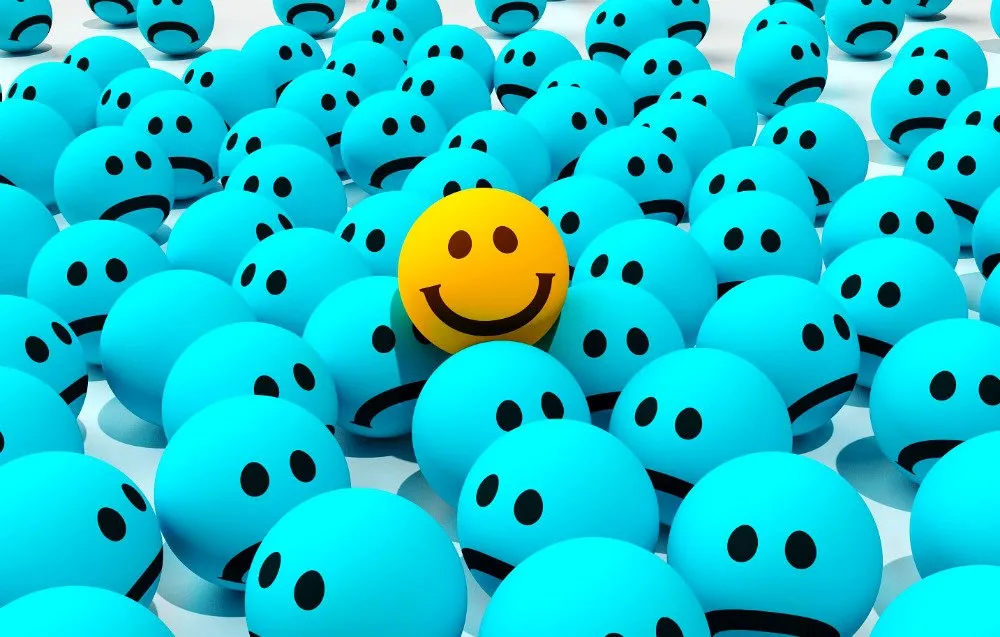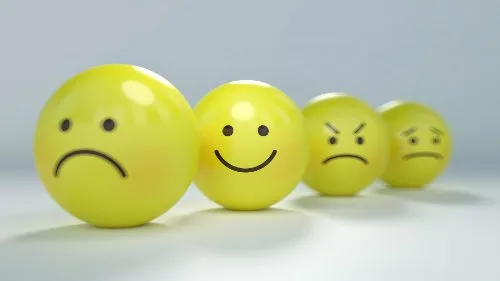
Earlier this year a relative sent me a Whatsapp message, the message in itself was nothing special, however at the end he gave me a thumbs up emoji.
It wasn't the fact that he left me a thumbs up that caught my attention, it was the fact that the
thumb was racially accurate. He has quite dark chocolate brown skin, and his emoji matched that.
Having not realised that the emoji palette had been upgraded, I'd just been using the good old Simpsons yellow, I was reasonably intrigued at this new development.
Over the next few months we spoke quite a lot over Whatsapp, each time I sent my yellow emoji, he would respond with his racially accurate one. Until finally I started to respond in kind.
However something I couldn't quite articulate was nagging at the back of my mind. Racially specific emojis were wrong, I just didn't know why.
Mirror Mirror
Once the genie was out of the bottle I couldn't just restrict sending my racially accurate emoji to my relative, that felt kind of weird. It was all or nothing.
I remember sending my light brown thumbs up to a friend of mine, and he responded with his Caucasian one in return.
Soon I was using my racially accurate emojis to all my friends, and they were responding back with theirs as well.
Before long, within my circle of friends and family it became normal to represent your skin tone when sending a hand gesture emoji. Be it a thumbs up, fist bump, or clap hands, I found myself on more than one occasion wondering if the emoji I was about to send was a fair representation of my exact skin colour.
However the undefined thought that was gnawing away at the edge of my conscious mind, refused to go away. I knew there was something wrong with the skin tone emojis, yet I couldn't quite articulate why.
Then finally yesterday, it dawned on me . . .
Emoji Utility
I've spoken in the past about the importance of emojis. Whilst they may seem trivial at first glance, they are actually an extremely important part of the fine and complex lattice that is human social interaction.
In the past when we regularly wrote letters to each other, there was perhaps no need for the humble emoji. Sure enough if you had asked me at any time in the 1980s if I had seen the latest emoji, I would have smiled, nodded and backed away slowly from you, whilst all the time keeping eye contact.
The reason we didn't need them when we wrote letters, was because there were no real or imagined boundaries set around their potential length.
We could be as expressive as we wanted, with our words, and we didn't have the sword of immediacy hanging over our heads. Indeed a person might take several days or even weeks to craft a letter, before finally sending it on to its destination.
In those scenarios, you made sure that the exact emotions you were attempting to convey to the recipient of your letter, made it onto the page in no unmistakable terms.
*Dear Fiona,
I was very disappointed to hear . . .*
Fast forward to the present day where most people do not send letters anymore, and messages to Santa aside many youngsters having never sent a letter to anyone (my eight year old sent her first one yesterday).
Today we send text and email, which by their very nature are short. When mobile phones were first able to send SMS messages, you were restricted in how much you could say. Over a certain amount and the text would divide itself up and send over two or more messages to your recipient.
The mobile networks weren't as whizz bang fast as they are today, and it wasn't unheard of to receive the second half of a text several hours, or even days after the first.
Even though that is no longer the case, the actual act of sending a text message is laborious, and the average concentration span has rapidly decreased. With just a few words and lines to play with to get your message across, it is nigh on impossible to convey your emotions as well.
Enter the emoji as our champion. Now a simple smiley face, thumbs up, or angry emoji can smartly and efficiently add emotion to our words. Leaving us safe in the knowledge that our message will not be misconstrued by the one who receives it.
What Colour Is Emotion?
That is the kind of question that might have been asked of you at a beatnik party in the 1960s (I don't know, coz I wasn't there man), however it makes absolutely no sense to try and give emotion a colour.
The reason we have more muscles in our face, and more expressive gestures than any other creature on earth, is because of our complex social structures. Which in turn have contributed to us living in such large groups, in relative harmony.
When two dogs meet each other on the street, they rely on the smell of their genitals and the tempo of their tail wags in order to gauge each other's mood. Even then they get it wrong, my dog cannot tell the difference between a dog that wants to play with him and one that wants to fight. Therefore he treats all dogs with caution.
In fact dogs can read human emotions better than they can each other's . . .
Whereas if I on the other hand, travel to Pakistan, China, Russia, Eritrea, or any other country where I can't speak the language, I can still read a smile or a scowl in the same way. In fact you can test this by taking an online test whereby you read emotions of different people of all races just by looking at the eyes.
Emotions are important to us, and they are universal. An angry Chinese man looks the same as an angry Nigerian or American.
It's not just restricted to our faces either, the world over, the 'hands up' gesture, whilst showing the palms, is used to placate a potentially volatile situation. Showing its recipient that you bare them no malice whatsoever.
In other words, emotion has no colour.
The Genius Of Yellow
Whoever decided to make the first colour emojis yellow, was either a social genius, or had simply subconsciously understood the racial neutrality of emotion.
In the same way you can't mistake the Simpsons for a real family, because unless a person is jaundiced, nobody real is that shade of yellow. So too do yellow emojis divorce themselves from any particular racial group.
Add to that, the fact that if I am conversing with you over Whatsapp, we are already fully aware of each other's ethnicity. Why then should we have to reinforce that with emojis?
Of course we don't, because by doing so, it is almost as if we are saying that my milk chocolate thumbs up, carries a different sentiment than your pinky-white one. When in fact we know the opposite to be true.
Back To Neutrality
So yesterday, I switched back to good old yellow. I sent a yellow thumbs up to the same friend I'd sent a brown one to before, I could almost hear his sigh of relief as he sent a yellow one back.
And once more, there was balance in the universe.
My emotions, as with yours, have no race, therefore if my emoji is going to accurately reflect your real life emotions, they should be racially neutral.
Long live the yellow emoji!

Images: Pixabay Creative Commons
WHAT ABOUT YOU GUYS, WERE YOU AWARE OF RACIALLY SPECIFIC EMOJIS? HAVE YOU BEEN USING THEM? HAVE PEOPLE SENT YOU THEM? DO YOU FEEL UNCOMFORTABLE WHEN SENDING OR RECEIVING THEM?
AS EVER, LET ME KNOW BELOW!